Affiliate links on Android Authority may earn us a commission. Learn more.
The 2023 Motorola Razr makes foldables mainstream
Published onApril 30, 2024
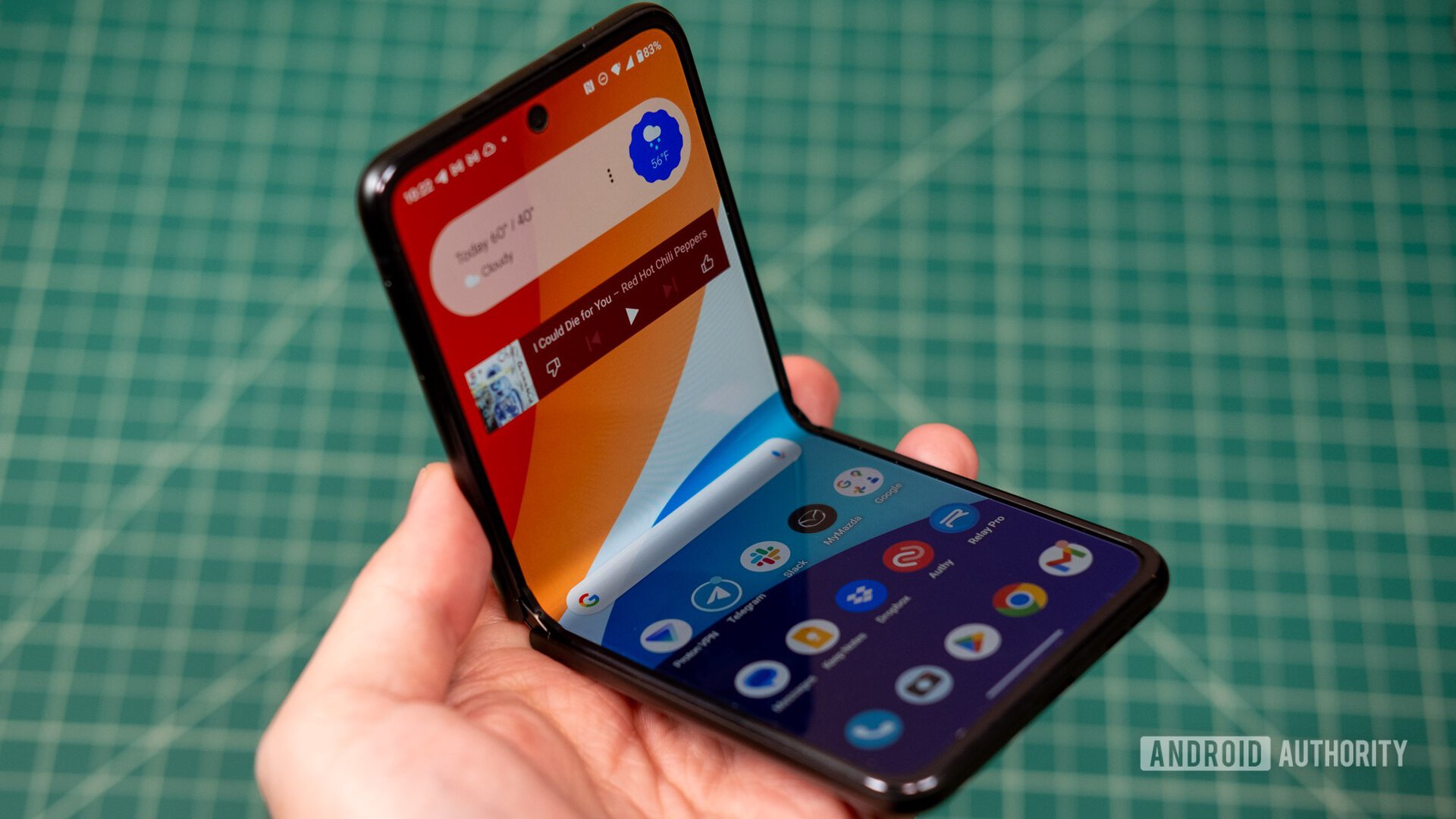
Foldable phones have made their mark after several generations, but these devices have always come with notable drawbacks. The prices are up there with the best flat phones, but you get inferior battery life, downgraded cameras, and the dreaded display crease. And then there’s the new Motorola Razr at $700. In some ways, its status as a budget phone is a boon. With different materials and a more modest processor, the 2023 Razr avoids pitfalls that made past foldables less desirable than their flat phone competitors.
This is a foldable phone that’s definitely worth the asking price.


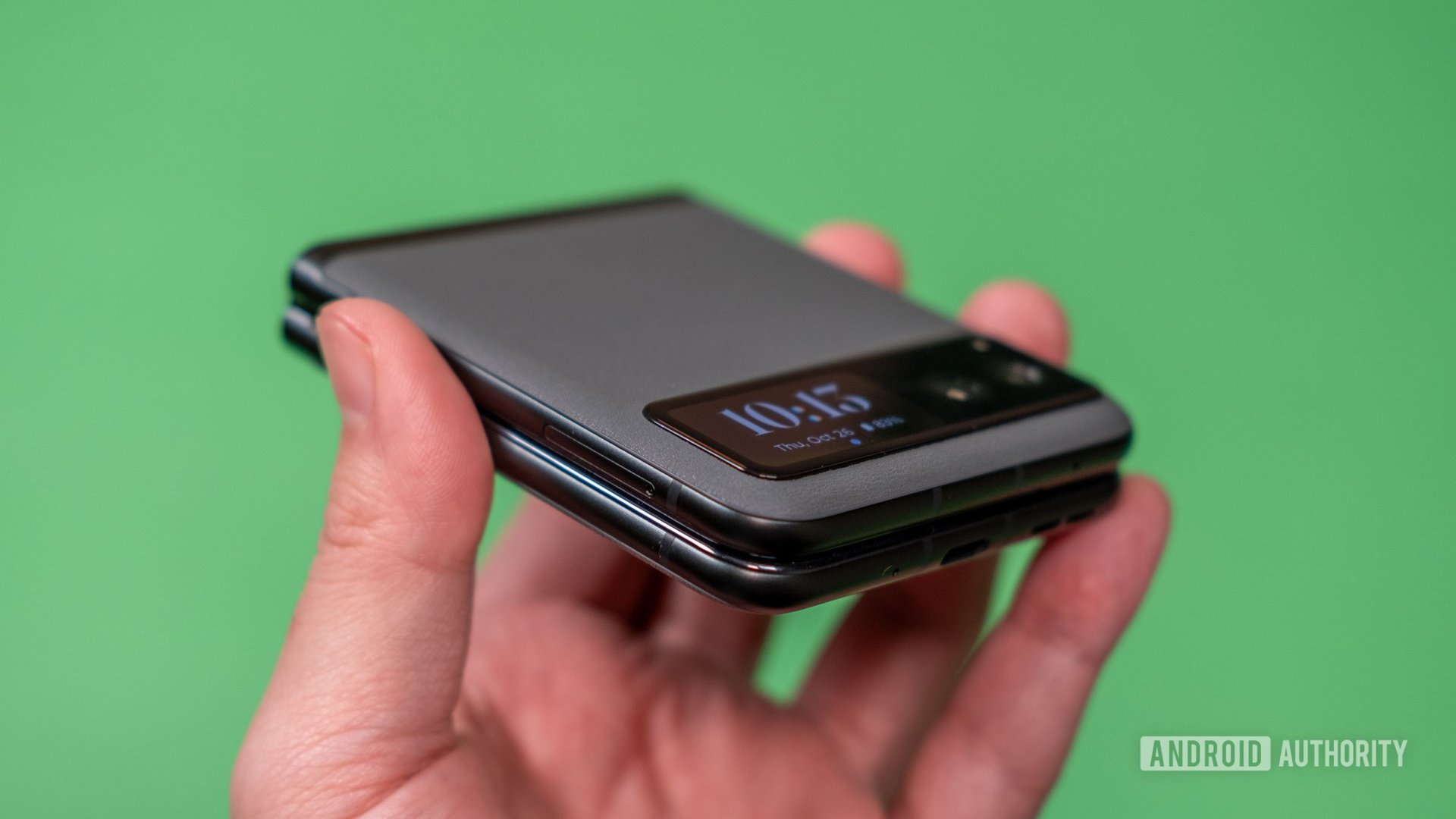
Like all of the modern wave of flip phones, the Razr is a flat little square when closed, making it a delight to carry around. It takes up much less space in your pocket or bag than any flat phone with a 6.9-inch display. The hinge feels smooth opening and closing, with more resistance than Samsung’s foldable hinges on the Galaxy Z Flip series. One upshot is that the phone feels more stable when open, not like something that folds in half at all.
The latest Razr is clad in “vegan leather,” which is the trendy way to refer to plastic-based materials that are treated to resemble leather. It covers the entire bottom half of the phone and most of the top, save for the glass camera and display cutout.
The Razr is partially waterproof with an IP52 rating; it’s fine in the rain, but don’t submerge it.
It is essentially required that all high-end smartphones have to be metal and glass sandwiches like the iPhone 15, Pixel 8, or Galaxy S24. Budget phones often use cheaper materials, but that may benefit foldables like the 2023 Razr. When you put a big sheet of glass inside a metal frame, as most flat smartphones do, you make the device much more rigid, as glass has extremely high compressive strength. Foldables can’t take full advantage of the strength of glass because they’re designed to fold in half. So, replacing the smaller glass panels on these phones with something less slippery might be preferable.
The soft faux leather of the Razr is grippy enough that it won't slip when you flip.
The faux leather on the Razr looks nice enough and is much more secure in the hand than glass. We’ve all felt the unease of picking up a giant slab phone that retails for $1,000 or more, hoping against hope you don’t drop it. The situation is even worse with foldables, which you have to grab and torque all day to open and close. The soft faux leather of the Razr is grippy enough that it won’t slip when you flip.
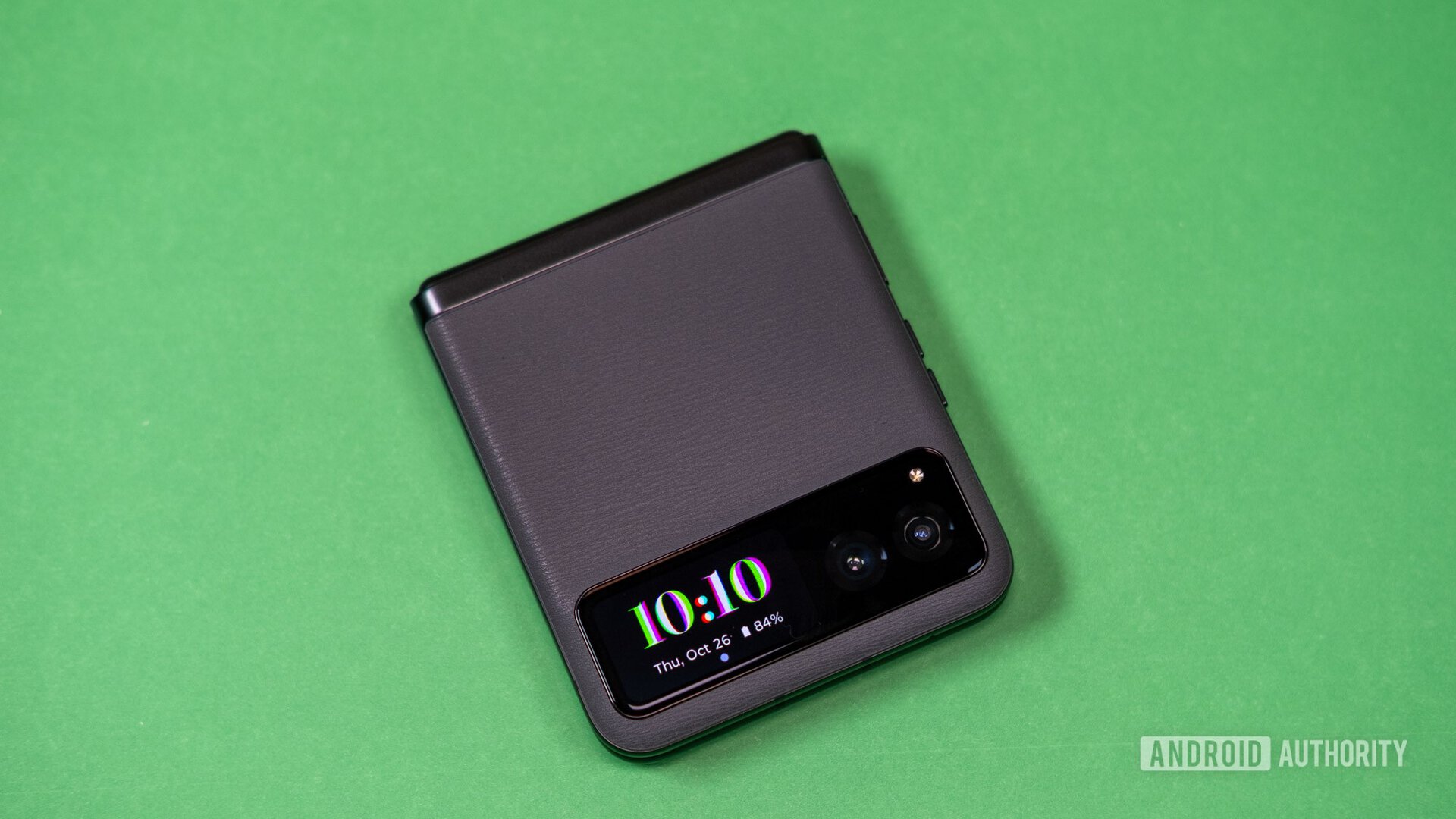
Foldables make battery compromises to accommodate a hinge in the middle of the phone, which can hurt them when compared with more long-lived flat phones. However, Motorola fits a relatively generous 4,200mAh cell inside this phone, substantially larger than the Galaxy Z Flip 5’s 3,700mAh battery.
Instead of a top-of-the-line Qualcomm chip, the Razr runs on the Snapdragon 7 Gen 1. This chip uses four high-power modern CPU cores and four efficiency cores, but it lacks the prime core from current flagship ARM chips. The Razr isn’t as powerful as rival foldables, but the difference in daily use is minimal — the Razr is a bit slower in games, but opening apps, browsing the web, waking the device from sleep, and other daily smartphone tasks are more than snappy enough. It doesn’t overheat like Snapdragon 8 chips, so the good enough speed is consistent. The budget chip uses less power, too, which pushes the battery life even higher. While the Galaxy Z Flip 5 sometimes has trouble making it through a whole day, the Razr does it no problem.
Yes, the Motorola Razr 2023 does have wireless charging, but it’s only 5W.
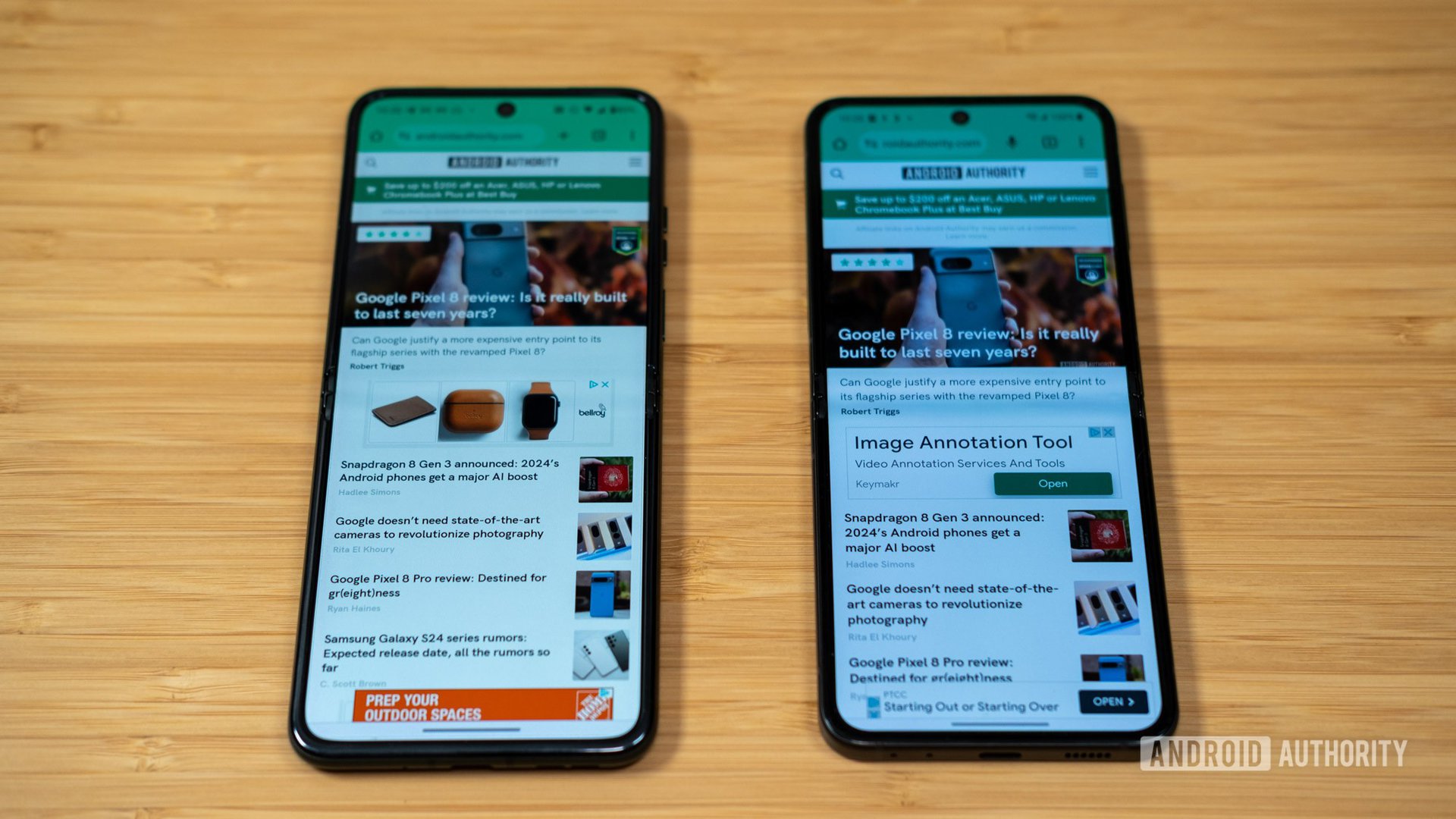
Moto has another foldable advantage, and this one has nothing to do with the Razr’s budget status. Motorola’s teardrop-style hinge reduces the appearance of the dreaded display crease. Comparing the Razr to a Samsung foldable, the Razr looks almost totally flat, whereas Samsung’s phones are visibly wavy in the center.
Motorola's teardrop-style hinge reduces the appearance of the dreaded display crease.
The Razr’s OLED panel itself is solid, too. It’s 6.9 inches at 1,080 x 2,640 with a 144Hz refresh rate — the $1,000 Motorola Razr Plus is the same except for a higher 165Hz refresh rate. It has the vibrant colors and deep blacks you’d expect from an OLED, and the peak brightness is good enough for outdoor use. Samsung and Google phones get brighter, though.
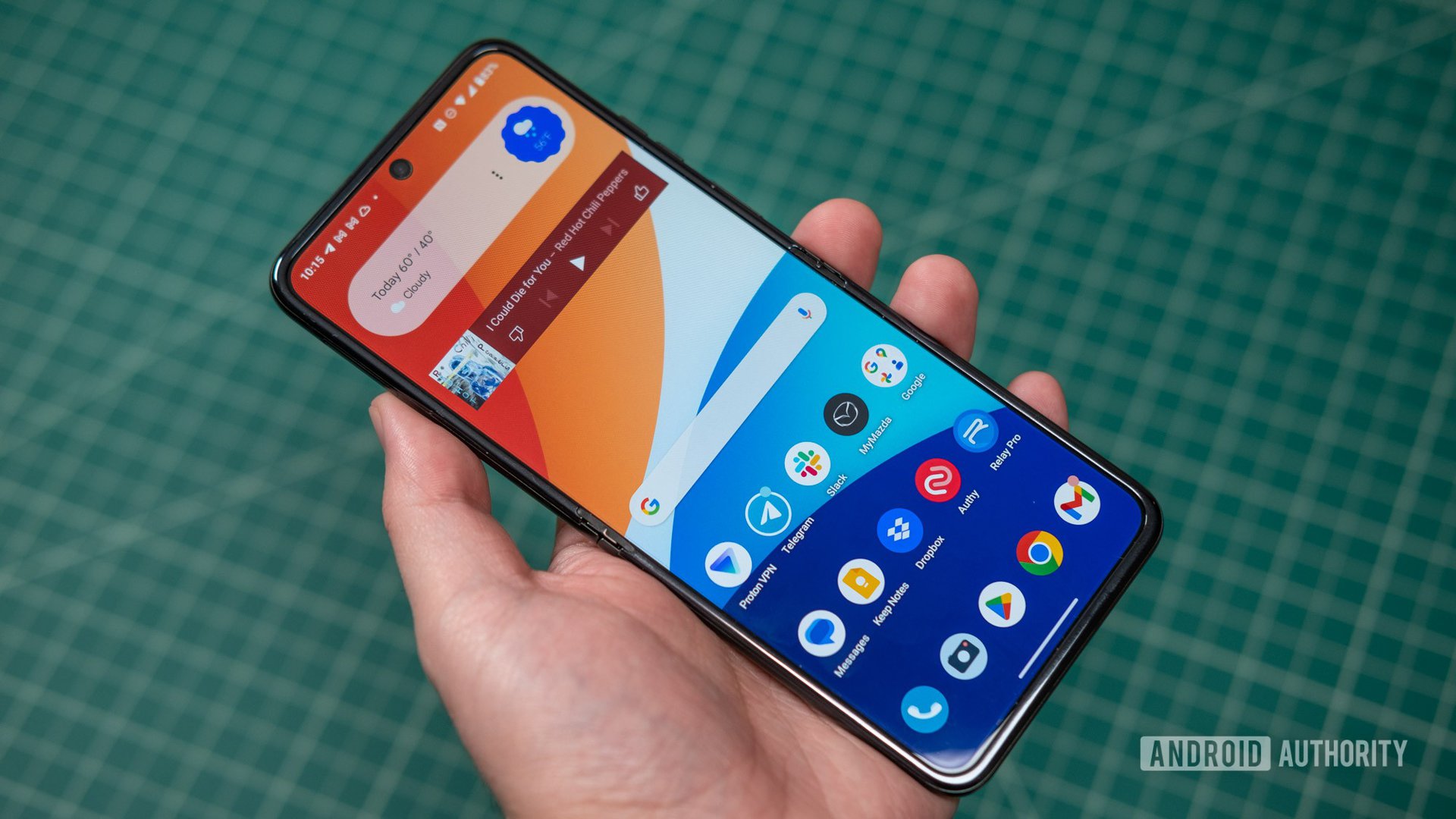
Today’s high-end clamshell foldables are competing on who can have the biggest external display, which does offer expanded functionality, but is that what you want? One of the nice things I like about flip phones is that closing them can help reduce distractions. The bigger screens on the Z Flip 5 and Razr Plus reintroduce time-sucking apps, but I found the modest 1.5-inch screen on the Razr to be perfect for giving me just enough information at a glance. You’ve got the time, date, notifications, music control, and a few other tidbits. If you need more, then you can flip it open and bask in the distraction machine.
Another standard foldable downgrade is the camera array. You can chalk that up to space and weight constraints, which is a bummer when you’re often paying as much or more for a foldable — Samsung and Google sell $1,800 foldables that don’t even have their best cameras on board. You wouldn’t expect the best with a mid-range phone, and you won’t get it on the Motorola Razr. You get a camera experience that seems about right for the price, which I’m willing to count as a small win. Here are some samples from the Razr’s cameras.
The Razr sports a 64MP primary camera and a 13MP wide angle. Despite the resolution, the main camera often produces fuzzy, dim photos with smoothed-over details. The phone also takes far too long to capture photos in anything other than bright light. That makes photographing a moving subject very tough. However, you can take selfies with the main camera thanks to the small external OLED. These shots might be better than your average front-facing shooter (with good lighting), but that’s the one saving grace.
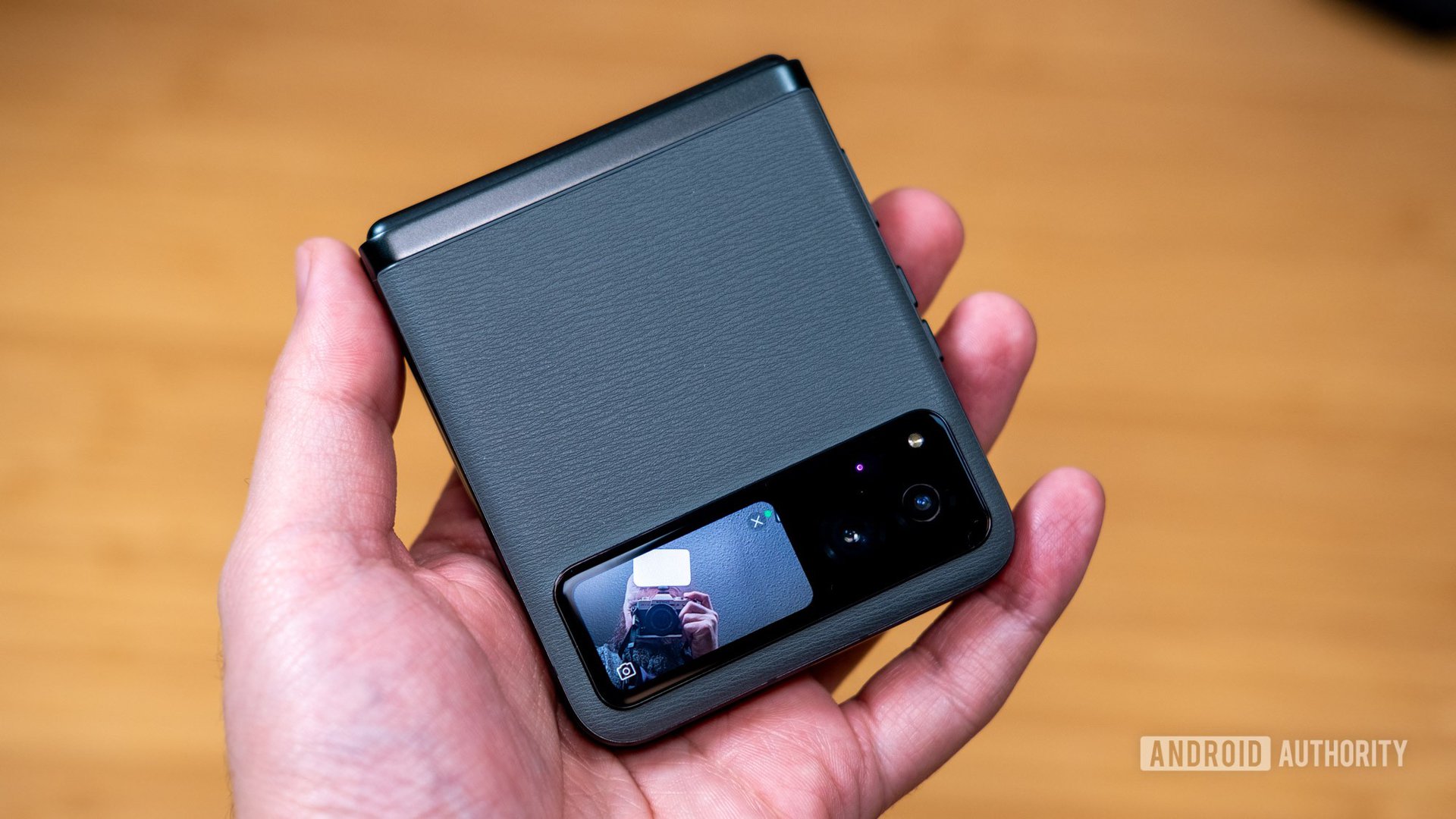
The Razr runs Android 13 out of the box, and it should get three years of OS updates, which isn’t exactly amazing, but not a terrible update policy either. We don’t know how quickly they’ll arrive, but Moto is not known for speed.
The out-of-the-box software experience is adequate — there’s a bit of bloatware to remove, but it doesn’t have the sketchy user-tracking apps from the latest G series phones. There are virtually no optimizations for the folding form factor, and there’s hardly any reason to use custom Moto features like Peek Display on this phone. Even though some of Samsung’s foldable features fall flat, a few are useful. Moto just doesn’t expend that much effort to adapt Android to foldables.
Motorola Razr (2023) specs
| Motorola Razr (2023) | Motorola Razr Plus | |
|---|---|---|
Display | Motorola Razr (2023) Internal: 6.9-inch LTPO pOLED 2,640 x 1,080 resolution (FHD+) 144Hz refresh rate 413ppi External: 1.5-inch AMOLED 194 x 368 resolution 60Hz refresh rate 282 ppi | Motorola Razr Plus Internal: 6.9-inch LTPO pOLED 2,640 x 1,080 resolution (FHD+) 165Hz refresh rate 413ppi External: 3.6-inch AMOLED 1,056 x 1,066 resolution 120Hz refresh rate 413 ppi |
Processor | Motorola Razr (2023) Snapdragon 7 Gen 1 | Motorola Razr Plus Snapdragon 8 Plus Gen 1 |
RAM | Motorola Razr (2023) 8GB LPDDR4X | Motorola Razr Plus 8GB LPDDR5 |
Storage | Motorola Razr (2023) 128GB UFS 2.2 | Motorola Razr Plus 256GB UFS 3.1 |
Power | Motorola Razr (2023) 4,200mAh battery 30W TurboPower wired charging 5W wireless charging | Motorola Razr Plus 3,800mAh battery 30W TurboPower wired charging 5W wireless charging |
Cameras | Motorola Razr (2023) Rear: - 64MP wide, f/1.7, PDAF, OIS - 13MP ultrawide, f/2.2 Selfie: - 32MP wide, f/2.4 | Motorola Razr Plus Rear: - 12MP wide, f/1.5, PDAF, OIS - 13MP ultrawide, f/2.2, 108-degree FoV Selfie: - 32MP wide, f/2.4 |
Audio | Motorola Razr (2023) Stereo speakers Dolby Atmos 3 microphones | Motorola Razr Plus Stereo speakers Dolby Atmos 3 microphones |
Video | Motorola Razr (2023) Primary: 4K at 30fps 1080p at 30/60fps Ultrawide: 4K at 30fps 1080p at 30fps | Motorola Razr Plus Primary: 4K at 30/60fps 1080p at 30/60fps Ultrawide: 4K at 30fps 1080p at 30fps |
Durability | Motorola Razr (2023) Vegan leather back Ultra-thin glass display Aluminum frame IP52 rating | Motorola Razr Plus Vegan leather or Gorilla Glass Victus back Ultra-thin glass display Aluminum frame IP52 rating |
Connectivity | Motorola Razr (2023) Wi-Fi 6e Bluetooth 5.3 | Motorola Razr Plus Wi-Fi 6e Bluetooth 5.3 |
Biometrics | Motorola Razr (2023) Side-mounted fingerprint reader | Motorola Razr Plus Side-mounted fingerprint reader |
Ports and switches | Motorola Razr (2023) USB 2.0 via USB-C | Motorola Razr Plus USB 2.0 via USB-C |
Software | Motorola Razr (2023) Android 13 3 full Android updates 4 years of bi-monthly security updates | Motorola Razr Plus Android 13 3 full Android updates 4 years of bi-monthly security updates |
Dimensions and weight | Motorola Razr (2023) Open: 73.9 x 170.8 x 7.3mm Closed: 73.9 x 88.2 x 15.8mm 188 grams | Motorola Razr Plus Open: 73.9 x 170.8 x 6.9mm Closed: 73.9 x 88.4 x 15.1mm 188.5 grams (glass back) 184.5 grams (vegan leather back) |
Colors | Motorola Razr (2023) Sage Green Vanilla Cream Summer Lilac | Motorola Razr Plus Infinite Black Glacier Blue Viva Magenta |
In the box | Motorola Razr (2023) Motorola Razr (2023) USB-C cable SIM ejector tool Quick start guide | Motorola Razr Plus Motorola Razr Plus USB-C cable SIM ejector tool Quick start guide |
Motorola Razr (2023) review: The right foldable at the right time
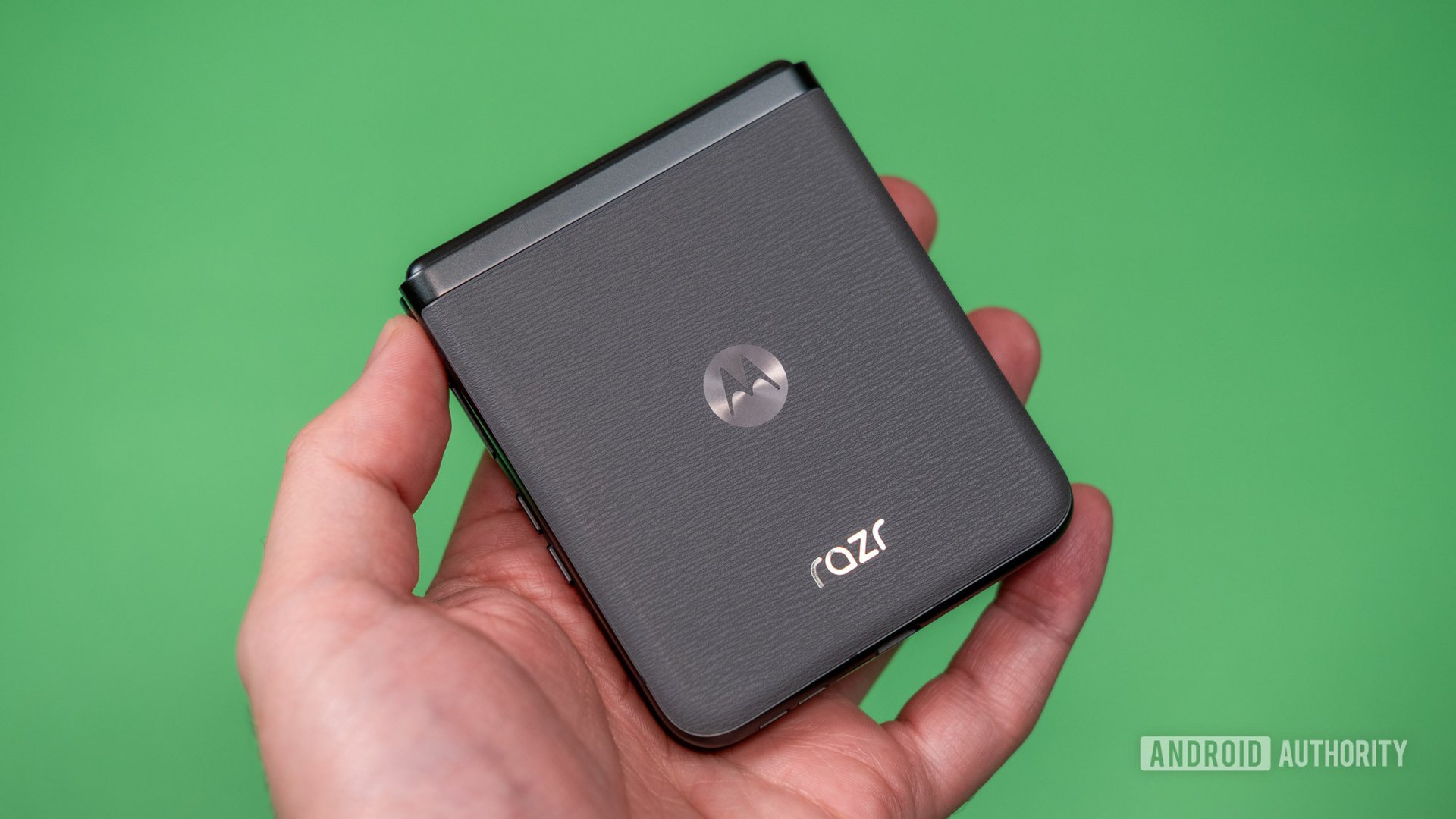
Foldables are amazing examples of engineering prowess, and they can be great for multitasking or saving space in your pocket, but most of them are too expensive. With the Motorola Razr, there is no “but.” It’s not as capable as the Google Pixel 8 or the Samsung Galaxy S24, but it’s cheaper than those phones. The speed, battery life, build quality, and features are in line with the asking price.
Most foldables stick to the tried and true formula of glass and metal bodies, but the cheaper Razr steps down to faux leather. And it works. The phone is much more grippy, which is important when you’re folding and unfolding all day. No matter how hard you slam it closed to hang up on an annoying caller, it’ll stay secure in your hand.
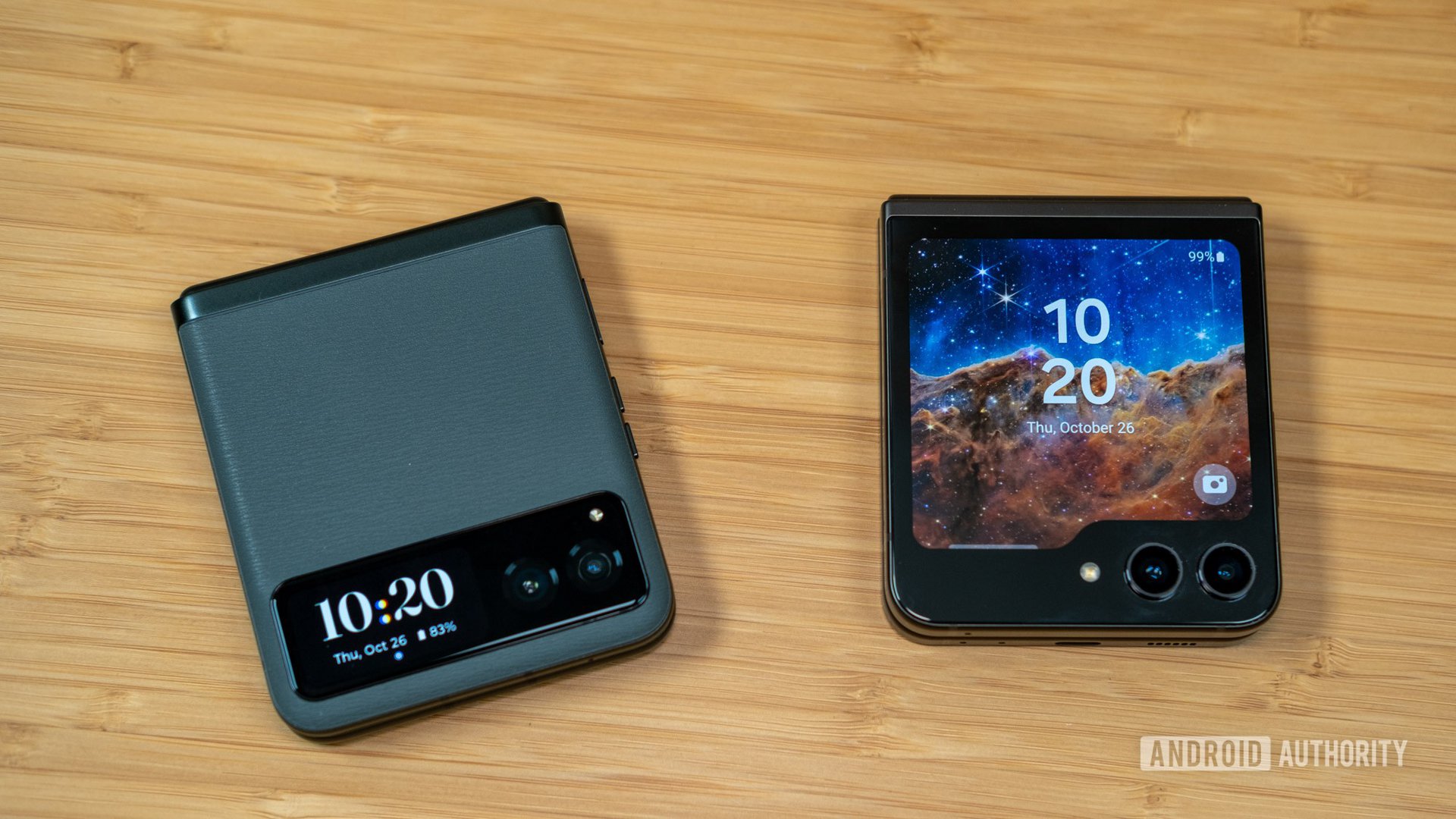
If there’s a sore spot, it’s the camera. The results aren’t terrible for the price, but spending just $100 more on a Pixel 8 ($699 at Amazon) gets you the best smartphone camera experience. Motorola’s camera should be more capable, but a lot of phones in this price range are far behind the Pixel. Even Motorola’s more expensive phones don’t do much better than the Razr. It’s just harder to forgive when the device costs $1,000.
The 2023 Motorola Razr is a foldable worth considering alongside competing devices in its price range, even in 2024. You don’t have to be determined to buy a foldable from the outset to end up deciding on the Razr.


Motorola Razr (2023) review: FAQs
Verizon does not sell the phone directly, but the Razr is unlocked and should work fine on the network, though it’ll only support sub-6GHz 5G.
The Motorola Razr 2023 supports one physical nano-SIM and one eSIM.
No, the Motorola Razr 2023 doesn’t have an SD card slot.